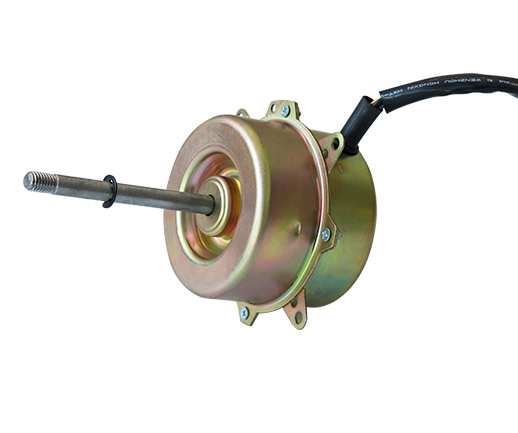1. Choose a low-noise motor: The easiest way is to choo […]
1. Choose a low-noise motor: The easiest way is to choose a cooler motors designed to operate with low noise. Some manufacturers have specially designed low-noise motors, using special bearings, fan blades and vibration suppression technology to reduce noise generation. Some motor manufacturers offer specially designed low-noise motors, which often use special bearing technology, such as hydrostatic bearings or hydraulic bearings, to reduce noise. They can also employ advanced motor control algorithms to ensure smooth operation.
2. Use acoustic covers or sound insulation materials: In equipment where cooling fan motors are installed, acoustic covers or sound insulation materials can be used to reduce noise. These materials reduce the transmission of sound and absorb vibrations, thereby reducing noise levels. In server racks, acoustic enclosures are often used to reduce cooling fan motor noise levels. These acoustic enclosures are shells made of sound-absorbing material that trap noise inside, reducing the amount of noise that spreads to the surrounding environment.
3. Reduce fan blade noise: The design and shape of fan blades have a great impact on noise levels. Specially designed blades can reduce airflow noise. Additionally, using well-balanced blades can reduce vibration and noise. Some high-performance computer coolers use specially designed fan blades, such as Noctua's "S-Blade" blades. The shape and angle of these blades are carefully designed to reduce airflow noise. Additionally, they can feature counterbalancing technology to reduce vibration and noise.
4. Reduce fan speed: Reducing the operating speed of your cooling fan motor can significantly reduce noise. This can be achieved by using an adjustable speed motor or by controlling the current flow. However, it's important to note that reducing speed may impact thermal performance, so a balance needs to be found between noise and performance. In office air conditioning systems, by using adjustable speed motors, the speed of the cooling fan motor can be reduced when noise reduction is required. For example, when the room temperature is close to the desired temperature, the motor can run at a lower speed to reduce noise.
5. Use vibration suppressors: Vibration suppressors can reduce the transmission of vibration into the structure of the equipment, thereby reducing noise. These suppressors are usually pads or spring assemblies that fit between the motor base and bracket. In industrial fan applications, vibration suppressors can be used to reduce vibration transfer into the structure, thereby reducing noise. These suppressors are usually made of rubber or spring material and are installed between the motor base and bracket to prevent vibration transmission.
6. Regular maintenance: Regular maintenance of cooling fan motors, including cleaning blades and lubricating bearings, can ensure their normal operation and reduce noise caused by friction and dirt. In large air conditioning systems, regular maintenance of the cooling fan motor is very important. Cleaning fan blades and lubricating bearings can reduce noise. For example, in industrial cooling towers, workers often inspect and clean fan blades regularly to ensure they are operating efficiently and reduce noise.
7. Use intelligent control systems: Some cooling fan motors are equipped with intelligent control systems that can adjust the operating speed according to the temperature and load conditions of the equipment to reduce noise. Such systems can provide higher efficiency and lower noise levels.
8. Design air channels: During the design stage of equipment, you can consider designing better air channels to optimize air flow and reduce noise. Reasonable airflow design can reduce fan noise. In car design, manufacturers often optimize the air passages in the engine bay to reduce fan noise. This includes adjusting guide panels and air inlets to reduce airflow noise and improve air circulation.
Air Conditioner Indoor Fan Motor
